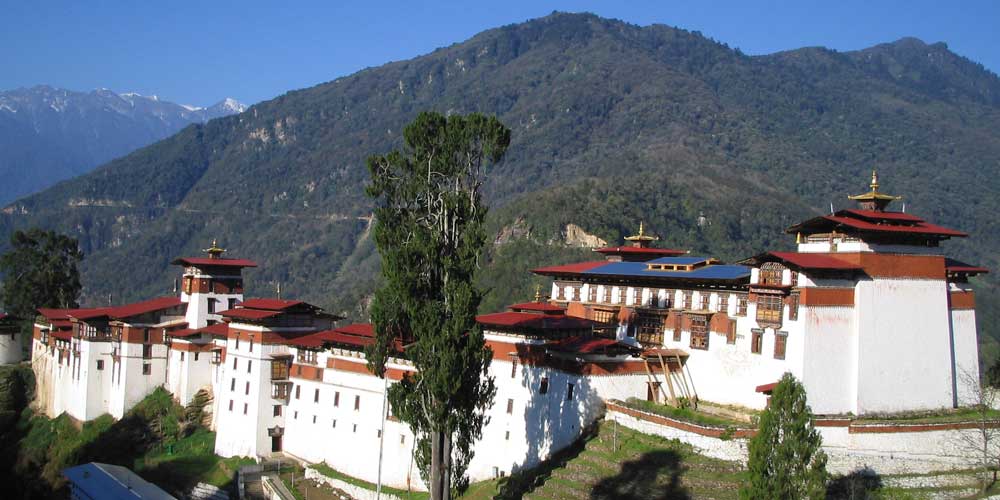
Altitude: 2316m
Trongsa is the central most Dzongkhag of Bhutan. It was from here that the present Royal Family emerged as the most powerful force in the beginning of the last century. Because of its highly strategic position as the only connection route between east and west, the Trongsa Penlop was able to control the entire eastern region effectively from Trongsa.
Trongsa has a total area of 1810.27 sq.km with altitude ranging from 600m to 5040m. The Dzongkhag has five Gewog which includes Drakten, Korphu, Langthil, Nubee and Tangsibjee.
Jigme Singye Wangchuck National Park spread over two Gewogs (Langthil and Korphu) under Trongsa Dzongkhag preserves the wild life found within the area which includes the white Languar and Himalayan Bear and a variety of Deer.
People survive of farming. In some areas potato cultivation is the main source of cash income. Because of limited size of land holdings and lack of farm infrastructure, in particular farm roads, farm productivity is low.
Places of Interest
Trongsa Dzong is the largest Dzong in the country built in 1647. It is also the ancestral home of the Royal Family, and both the first and second kings ruled the country from Trongsa. The Dzong sits on a narrow spur that sticks out into the gorge of the Mangde-Chu River and overlooks the routes east, west and south. It was built in such a way that in the olden days, it had complete control over all east-west traffic. This helped to augment the strategic importance of the Dzong which eventually placed its Penlop (regional ruler) at the helm of a united country when His Majesty Ugyen Wangchuk became the first king of Bhutan. To this day, the Crown Prince of Bhutan becomes the Penlop of Trongsa before ascending the throne, signifying its historical importance.
Ta Dzong or the watch tower which once guarded Trongsa Dzong from internal rebellion stands impressively above the Dzong and provides visitors an insight into the historical significance of Trongsa in Bhutan’s history. It has now been renovated and transformed into a museum.
Chendebji Chorten is situated at the confluence of two rivers on the way to Trongsa. This Chorten is a replica of the Bodhinath stupa in Kathmandu, Nepal with eyes painted at the four cardinal points. It was built in the 18th century by Lama Sidha from Tibet to cover the remains of an evil spirit that was subdued at the spot.
Kuenga Rabten, the winter palace of the second king, His Majesty Jigme Wangchuck, is about an hour drive form Trongsa town. It offers a good insight into the early days of Bhutanese monarchy.